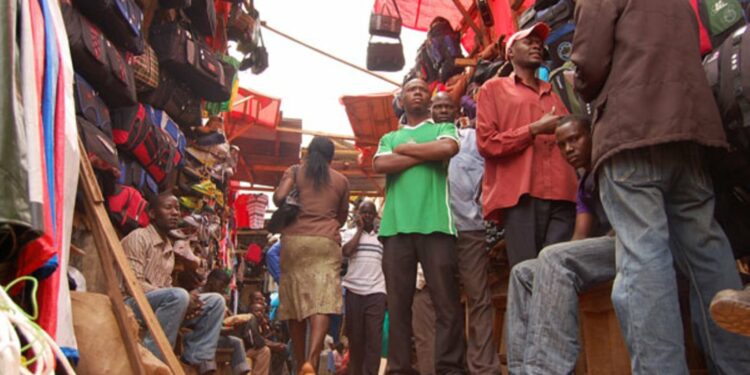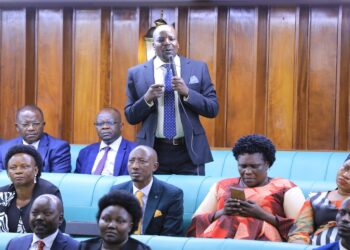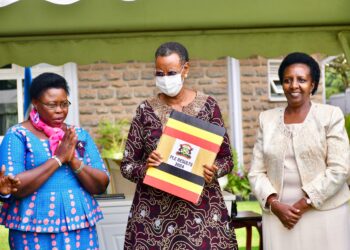Even as Uganda’s informal sector is huge, the country’s young population is still facing a biting challenge of joblessness, which has brought unforetold misery to lives of many.
According to the report released by the International Labor Organization (ILO) in 2021, 6% of African youth between the age of 15 and 24 are either unemployed, wrecked by abject poverty, or doing unstructured work.
The Guardian report published in 2019 indicates that more than 40,000 young people graduating from Ugandan universities are struggling to get employment, due to lack of necessary skills required on the job market, while the 2021 Daily Monitor report points to the fact that 87% of graduates cannot find jobs.
These are daunting statistics; a grim reality for Uganda’s young population, in this ruthless globalized world, marked by cut-throat competition for every opportunity.
This dire situation has forced these youngsters to retreat into the informal sector, to scrap a bare living but worse still, most of them lack necessary vocational competencies to start any venture, however small.
An informal sector/ economy refers to any economy that is neither taxed nor monitored by any form of government. In Uganda, this includes mushrooming small ventures, or micro enterprises like chapatti kiosks, which are not registered with Uganda Registration Services Bureau (URSB) and therefore free from taxation or state monitoring.
As of financial year 2018/19, Uganda’s informal sector stood at 51% of the economy. However, government has been making tireless efforts to reduce the share of the informal sector to 45% in 2024/25, by increasing competitiveness of the private sector and promoting sustainable inclusive growth.
This, it is thought will increase the country’s industrial base, through turning those small ventures into huge and scalable enterprises, hence widening the country’s tax base and creating a vast array of jobs for the ever increasing youth population.
Such relentless efforts to prop up the formal sector have bore little fruits and the informal economy is still huge. It was thought that this unregulated and untaxed sector would absorb Uganda’s semi and unskilled laborforce that is not formally hired by business ventures, Non-Governmental Organizations (NGOs), government departments and ministries.
However, its the other way round.
According to the March 2023 Africa Wealth Report, Uganda produced an 560 dollar millionaires in 2022, registering a sharp decline from what was the reality in 2021, when the country counted 940 dollar millionaire individuals.
A million dollar individual refers to a citizen with investable assets of more than USD. 1 million. It should be noted that in Uganda, it is a “two sides of a coin” scenario.
As the country’s wealthy individuals focus on swimming in the warm waters of their ground-breaking wealth, a gigantic number of the country’s citizenry continue to langush in biting poverty. The sad part of the story is that most of these “poor of the poorest” are the youth.
While officiating at the International Youth Day in Gulu on August 27th, 2022, Uganda’s “strong man” President H.E Yoweri Museveni seemed to play a blame game, accusing most of the youth for being the orchestrators of their own financial miseries.
H.E Museveni said some of Uganda’s youth waste precious time in non income generating activities like gambling, alcoholism, prattling, instead of engaging in income generating initiatives.
“Engage in commercial agriculture, and stop wasting our time,” President Museveni told the youth and alluded to his own lived experience, saying that his farms in Rwakitura and Kisozi not only ensure steady flow of cash in his wallet, but also create jobs for other people from which they earn a living.
Relentless efforts by political leaders, the church, and other key stakeholders to perpetuate mindset change for Uganda’s young population, with emphasis on agro-industrialisation and other startups as a right trajectory out of poverty has not done much to ward off unemployment and poverty upheavals. One wonders where the problem could be.
Uganda has a young population, with official statistics noting that 80% of it is aged under 30. There are only 238,000 jobs available for the 700,000 of these youth who annually enter the job market.
According to the Finance Ministry’s Poverty Status Report 2021 released in February 2023, 75% of Uganda’s youth employed in the informal sector bear grim working conditions, characterized by lack of protective gears, job insecurity and extremely low wadges, which even delay.
“While their employment status is ambiguous, rendering them unable to enjoy, exercise or defend their fundamental rights, these workers are not organised,” reads part of the report.
However, according to the report on the level of unemployment in Uganda published by Aaron O’Neil on April 4th, 2022, there is a tepid reduction in the country’s level of joblessness among the populace, with a 4.3% reduction from 2021-2022.
This is an indicator that efforts by government to curtail joblessness, through Ministry of Science, Technology and Innovations, in collaboration with private sector agencies like MasterCard Foundation, Startup Uganda and others, are paying off but at a snail speed.
Do you have a story in your community or an opinion to share with us: Email us at editorial@watchdoguganda.com













